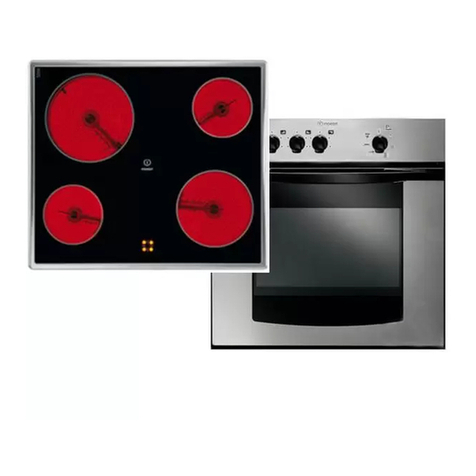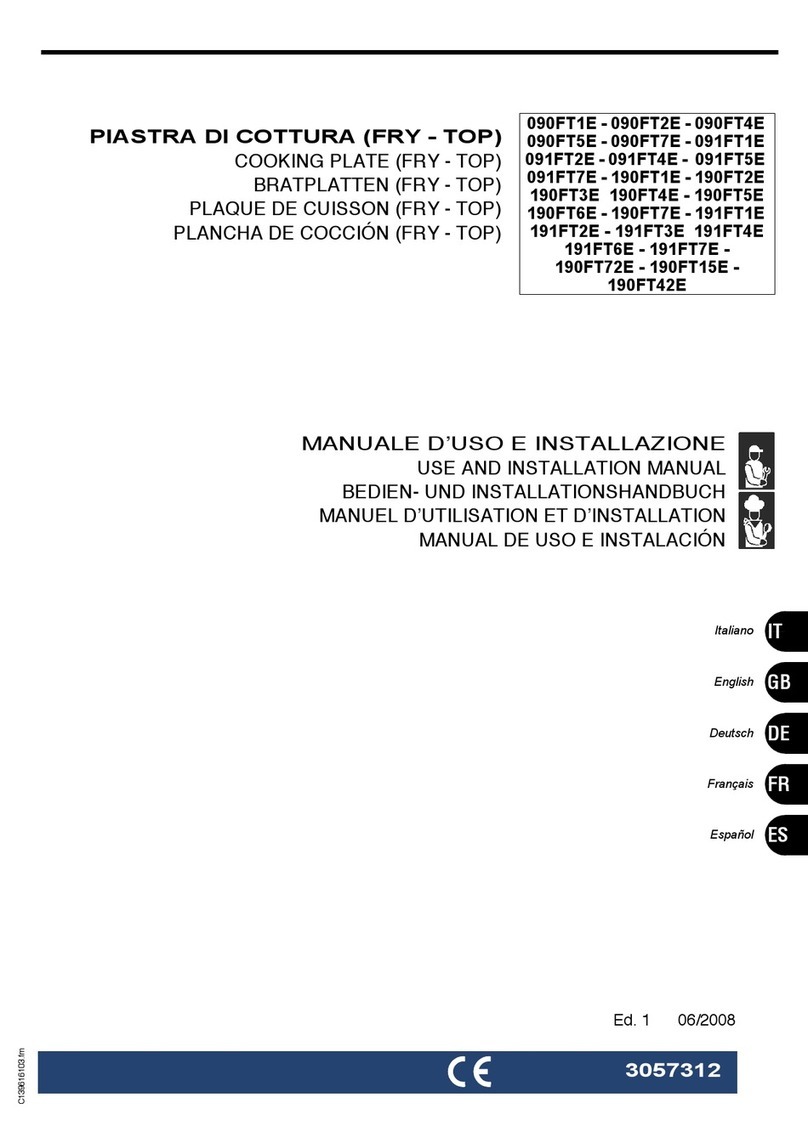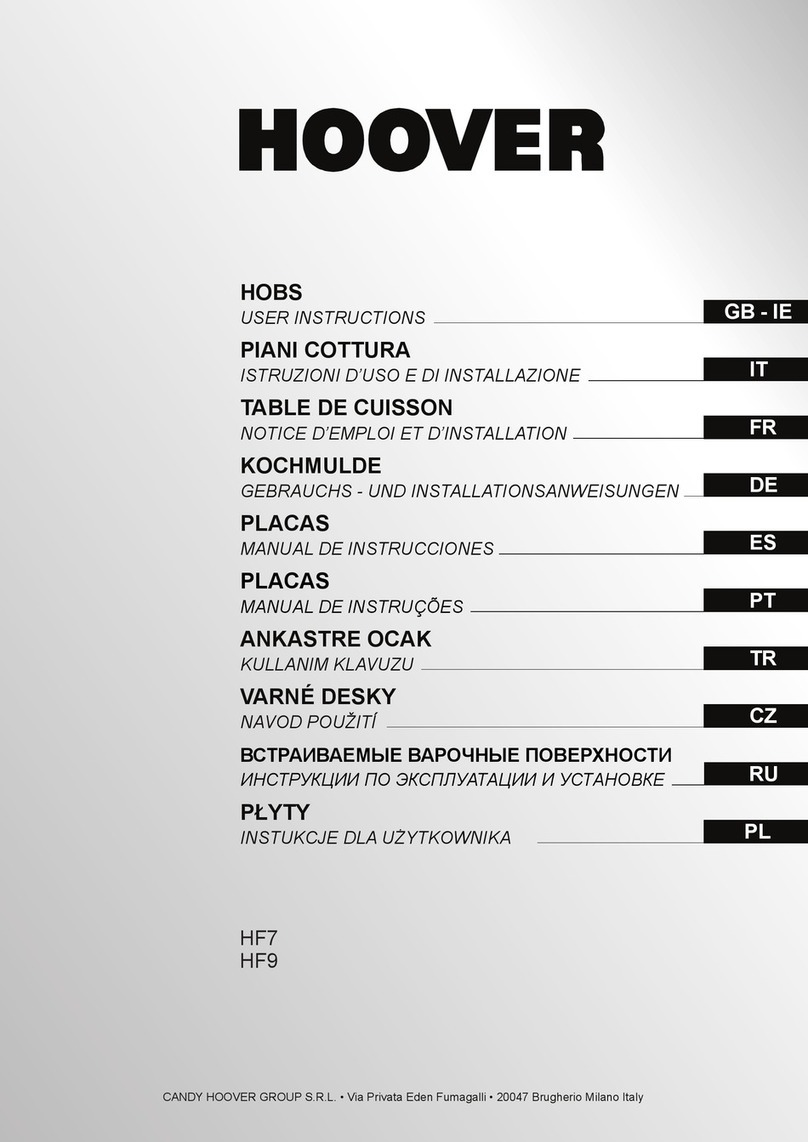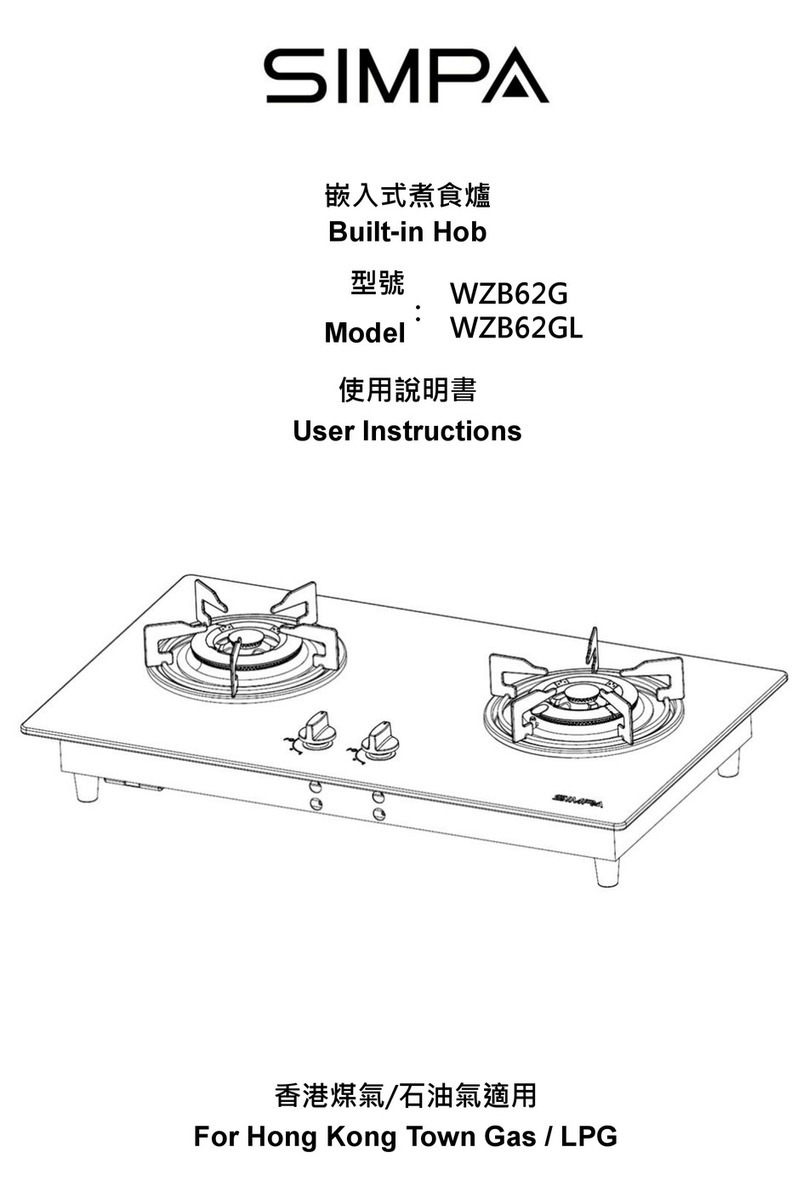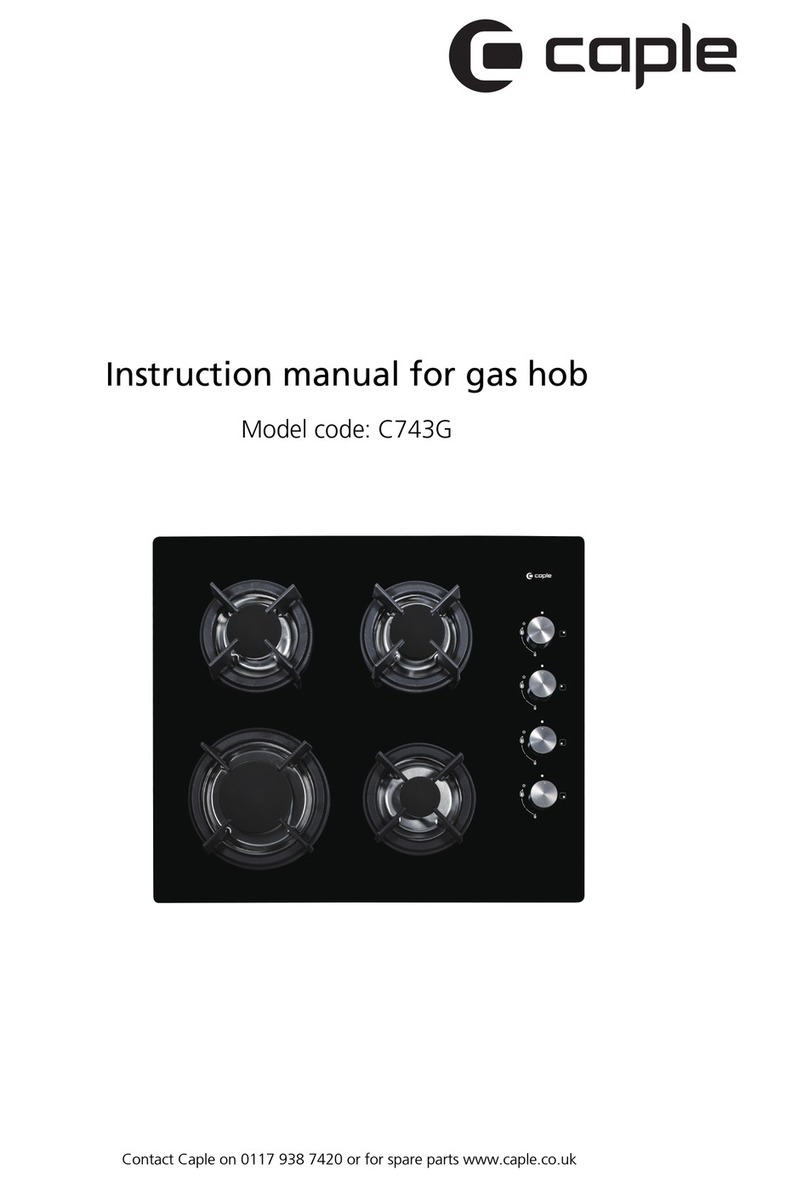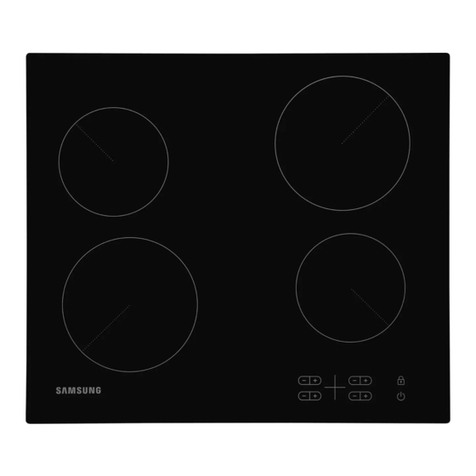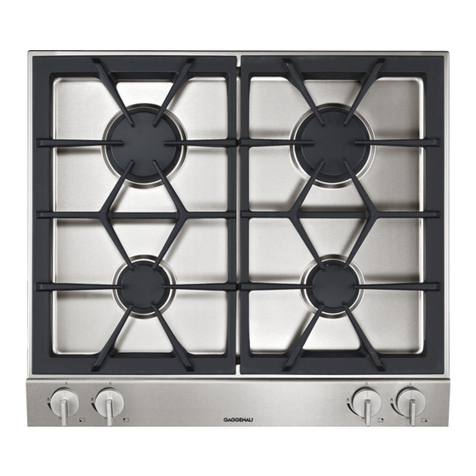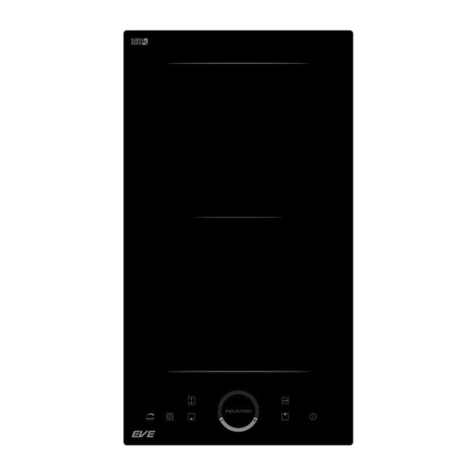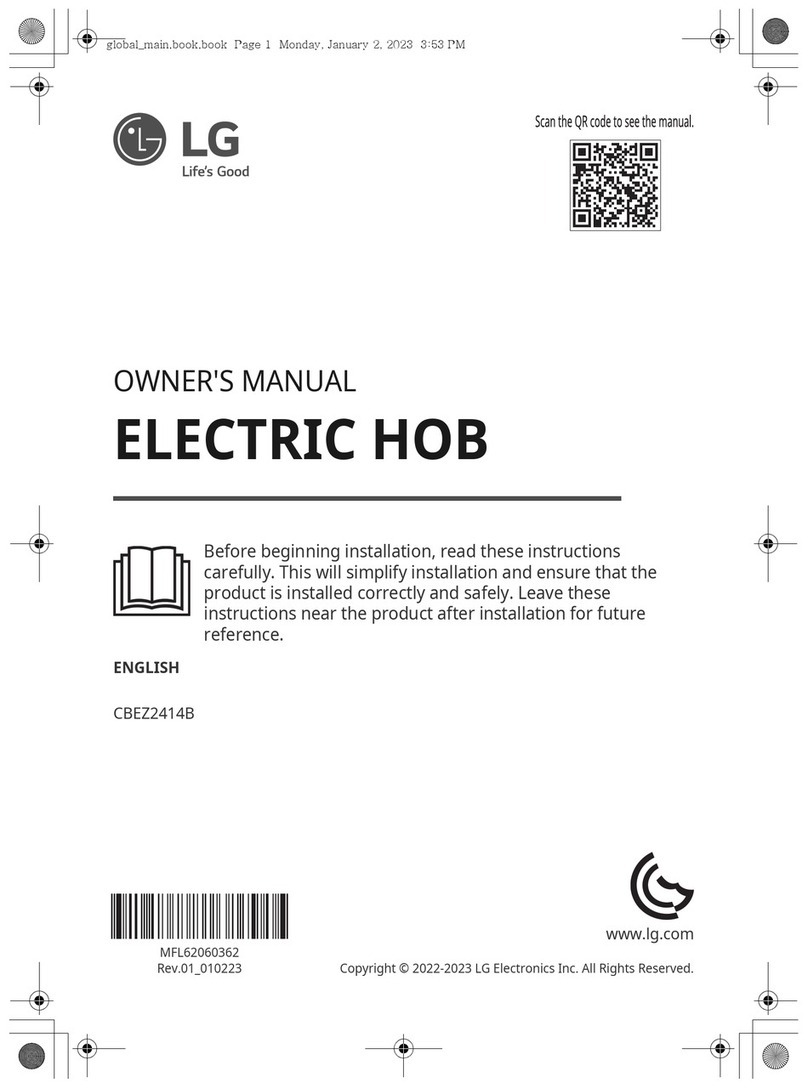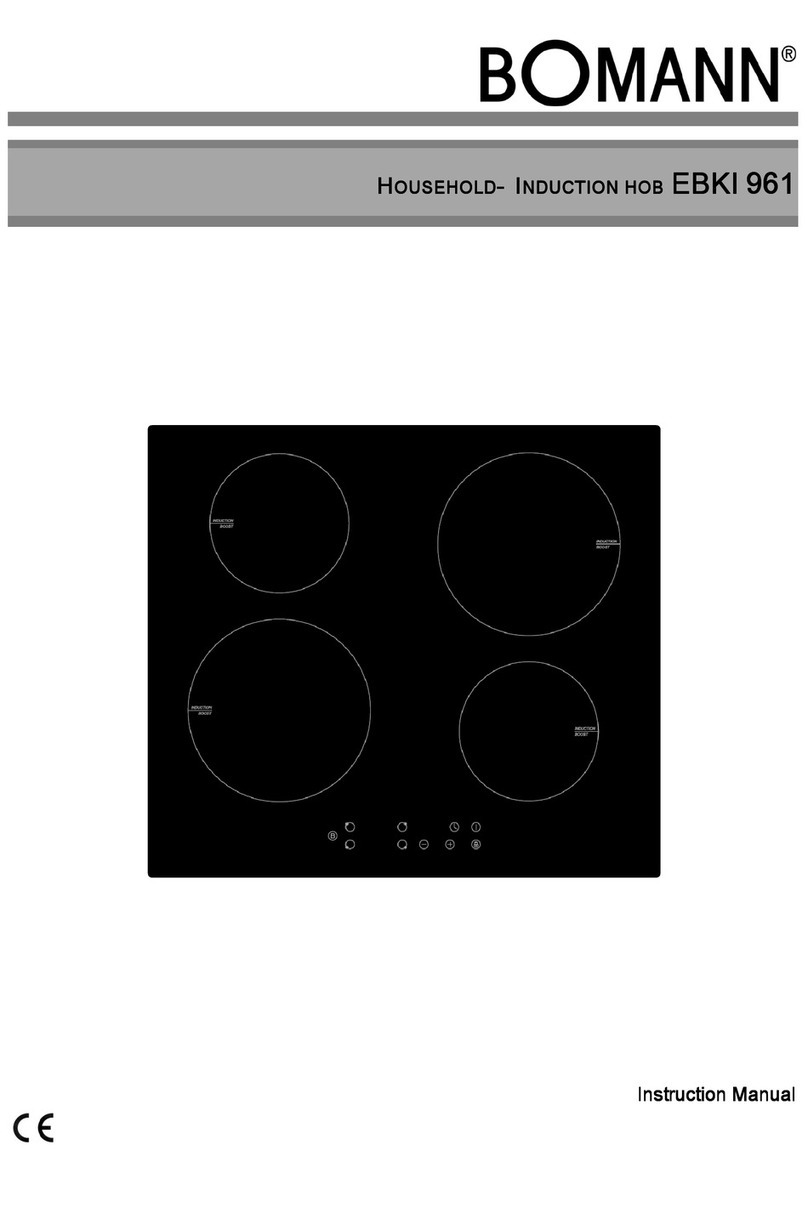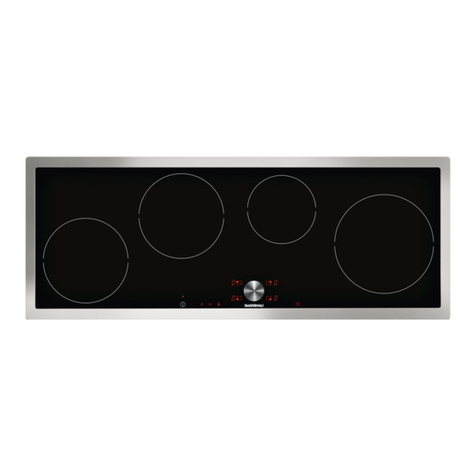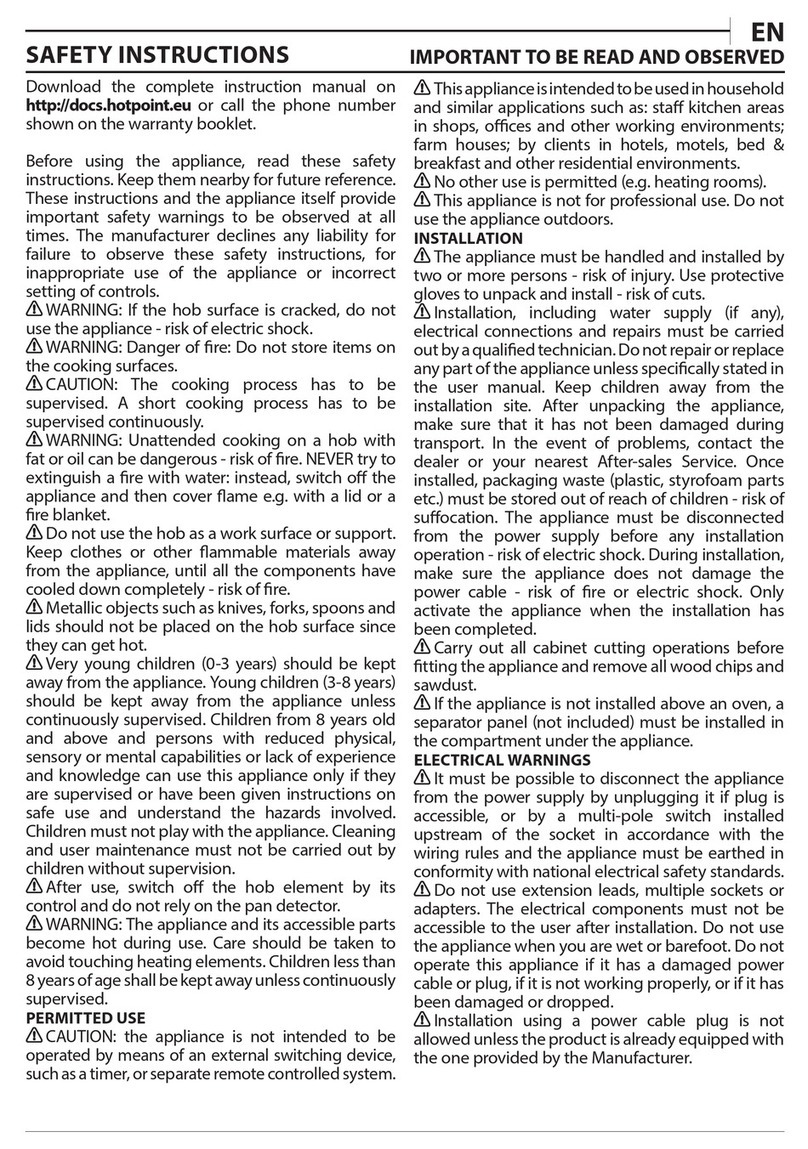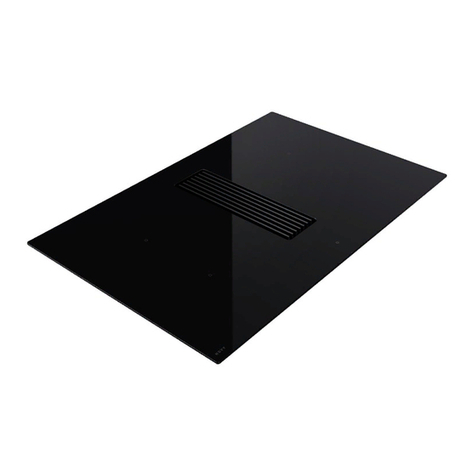BigBlue Select 90ec Mounting instructions

INSTALLATION INSTRUCTIONS AND USER GUIDE
Select 90ec
ISSUE C

2
Important:
This appliance is designed and manufactured solely for the cooking of domestic
(household) food and is not suitable for any non domestic application and therefore
should not be used in a commercial environment.
The appliance guarantee will be void if the appliance is used within a non domestic
environment i.e. a semi commercial, commercial or communal environment.
Dear Customer,
Thank you for having purchased and given your preference to our product.
The safety precautions and recommendations reported below are for your own safety
and that of others. They will also provide a means by which to make full use of the
features offered by your appliance.
Please preserve this booklet carefully. It may be useful in future, either to yourself or
to others in the event that doubts should arise relating to its operation.
This appliance must be used only for the task it has explicitly been designed for,
that is for cooking foodstuffs. Any other form of usage is to be considered as
inappropriate and therefore dangerous.
The manufacturer declines all responsibility in the event of damage caused by
improper, incorrect or illogical use of the appliance.
Introduction

3
IMPORTANT INFORMATION FOR CORRECT DISPOSAL OF THE PRODUCT IN
ACCORDANCE WITH EC DIRECTIVE 2002/96/EC.
At the end of its working life, the product must not be disposed of as
urban waste. It must be taken to a special local authority differentiated
waste collection centre or to a dealer providing this service.
Disposing of a household appliance separately avoids possible nega-
tive consequences for the environment and health deriving from inap-
propriate disposal and enables the constituent materials to be recov-
ered to obtain significant savings in energy and resources. As a
reminder of the need to dispose of household appliances separately,
the product is marked with a crossed-out wheeled dustbin.
IMPORTANT INSTRUCTIONS AND ADVICE FOR THE USE OF ELECTRICAL
APPLIANCES
The use of any electrical appliance requires the compliance with some basic rules,
namely:
– do not touch the appliance with wet or damp hands (or feet)
– do not use the appliance whilst in bare feet
– do not allow the appliance to be operated by children or unqualified persons without
supervision.
The manufacturer cannot be deemed responsible for damages caused by wrong or
incorrect use.
DECLARATION OF CE CONFORMITY
•
This cooker has been designed, constructed and marketed in compliance with:
- Safety requirements of EU Directive "Low Voltage" 2006/95/EC;
- Protection requirements of EU Directive "EMC" 2004/108/EC;
- Requirements of EU Directive 93/68/EEC.

4
IMPORTANT SAFEGUARDS AND RECOMMENDATIONS
After having unpacked the appliance, check to ensure that it is not damaged.
In case of doubt, do not use it and consult your supplier or a professionally qualified
technician.
Packing elements (i.e. plastic bags, polystyrene foam, nails, packing straps, etc.) should
not be left around within easy reach of children, as these may cause serious injuries.
•ATTENTION: please peel plastic cover off both sides and front of the cooker before
use.
• Do not attempt to modify the technical characteristics of the appliance as this may
cause danger to users.
• Do not carry out any cleaning or maintenance operations on the appliance without first
disconnecting it from the electric power supply.
• If you should decide not to use this appliance any longer (or decide to substitute an
older model), before disposing of it, it is recommended that it is made inoperative in an
appropriate manner in accordance to health and environmental protection regulations,
ensuring in particular that all potentially hazardous parts be made harmless, especially
in relation to children who could play with unused appliances.
• After use, always ensure that the control knobs are in the off position.
• Household appliances are not intended to be played with by children.
• Keep children away from the appliance during use.
• Children, or persons with a disability which limits their ability to use the appliance,
should have a responsible person to instruct them in its use. The instructor should be
satisfied that they can use the appliance without danger to themselves or their sur-
roundings.
• During and after use of the cooker, certain parts will become very hot. Do not touch hot
parts.
• Some appliances are supplied with a protective film on steel and aluminium parts.
This film must be removed before using the appliance.
•WARNING
When correctly installed, your product meets all safety requirements laid down for
this type of product category. However special care should be taken around the
rear or the underneath of the appliance as these areas are not designed or
intended to be touched and may contain sharp or rough edges, that may cause
injury.
•Fire risk! Do not store flammable material in the ovens or in the storage compart-
ment.
• Make sure that electrical cords connecting other appliances in the proximity of
the cooker cannot come into contact with the hob or become entrapped in the
oven door.
• Do not line the oven walls with aluminium foil. Do not place baking trays or the
drip tray on the base of the oven chamber.

5
• The manufacturer declines all liability for injury to persons or damage to property
caused by incorrect or improper use of the appliance.
• The various components of the appliance are recyclable. Dispose of them in
accordance with the regulations in force in your country. If the appliance is to be
scrapped, remove the power cord.
• Always use oven gloves when removing the shelves and food trays from the oven
whilst hot.
• Do not hang towels, dishcloths or other items on the cooker or its handle – as
this could be a fire hazard.
• Clean the oven regularly and do not allow fat or oils to build up in the oven base
or trays. Remove spillages as soon as they occur.
• Do not stand on the cooker or on the open oven door.
• Always stand back from the cooker when opening the oven door to allow steam
and hot air to escape before removing the food.
• Do not allow heavy or sharp objects to drop on the glass ceramic hob. If the hob
is cracked or otherwise damaged by falling objects etc., isolate the cooker from
the power at the fuse / circuit breaker and call Customer Service.
• Do not scratch the hob with sharp objects. Don't use the hob as a work surface.
• This appliance is for domestic use only.
•WARNING: Taking care NOT to lift the cooker by the door handles.
•Safe food handling: leave food in the oven for as short a time as possible before
and after cooking. This is to avoid contamination by organisms which may cause
food poisoning. Take particular care during warmer weather.
• Do not operate your appliance by means of an external timer or separate remote-
control system.

6
Cooking Hob
1
2
1
3
4
65
VITROCERAMIC COOKING HOB
1. 3 circuits cooking zone Ø 180 1700 W
2. 3 circuits cooking zone Ø 145 1200 W
3. Oval cooking zone Ø 145 x 250 1800/1000 W
4. Double cooking zone Ø 210/120 2100/700 W
5. 3 circuits cooking zone Ø 145 1200 W
6. Cooking zones residual heat indicators
Attention! Electrical Shock Hazard.
If the hob is cracked or otherwise damaged by falling objects etc., isolate the cooker
from the power at the fuse / circuit breaker and call Customer Service.
Fig. 1.1

7
CONTROL PANEL - Controls description
1. Electronic programmer (main left oven only)
2. Multifunction main oven thermostat knob (left oven)
3. Multifunction main oven switch knob (left oven)
4. Front left cooking zone control knob
5. Rear left cooking zone control knob
6. Central cooking zone control knob
7. Rear right cooking zone control knob
8. Front right cooking zone control knob
9. Conventional oven switch knob (right oven)
10. Conventional oven thermostat knob (right oven)
Pilot lamps:
11. Main oven thermostat indicator light (left oven)
12. Conventional oven thermostat indicator light (right oven)
13. Ceramic hob ON indicator light
Please note: This appliance incorporates a safety cooling fan which you will hear
operating whenever the oven or grill are in use. This fan is to reduce the external
temperature of the appliance and cool the internal components.
250
200 150
100
50
00
MULTIF UNC TIO N
TEM PE RAT UR E
0
1
2
34
5
6
0
1
2
34
5
6
0
1
2
34
5
6
0
1
2
3
4
5
6
7
8
9
10
11
12
0
1
2
3
4
5
6
7
8
9
10
11
12
0
FUNC TIO N
200 150
100
50
0
TEM PE RAT UR E
S e l e c t 9 0 e c
A
U
T
O
P
1 2 4 5 7 8 9 10
3
11 12
Fig. 2.1
6
Control Panel
2
13

8
The electronic programmer is a device that groups together the following functions:
– 24 hour clock with illuminated display
– Timer (up to 23 hours and 59 minutes)
– Programme for automatic oven cooking
– Programme for semi-automatic oven cooking.
A
U
T
O
Description of the lighted symbols:
AUTO -flashing - Programmer in auto-
matic position but not pro-
grammed
AUTO -always lighted - Programmer in
automatic position with pro-
gramme inserted.
Automatic cooking taking place
Timer in operation
and AUTO - flashing - Programme
error.
(The time of day lies between the
calculated cooking start and end
time).
Note: Select a function by the respective
button and, in 5 seconds, set the
required time with the / buttons
(“one-hand” operation).
A power cut zeroes the clock and can-
cels the set programmes.
Description of the buttons:
Timer
Cooking time
End of cooking time
Manual position and cancellation of
the inserted cooking programme
Advancement of the numbers of all
programmes
Turning back of the numbers of all
programmes and changing the fre-
quency of the audible signal.
Fig. 3.2
Fig. 3.1
(main left oven only)
Electronic Programmer
3

9
ELECTRONIC CLOCK (fig. 3.2)
The programmer is equipped with an
electronic clock with lighted numbers
which indicate hours and minutes.
Upon immediate connection of the oven
or after a blackout, three zeroes will
flash on the programmer panel.
To set the hour it is necessary to push
the button and then the or
button until you have set the exact hour
(fig. 3.2).
Alternatively, simultaneously push the
two buttons and at the same
time push the or button.
Note: Setting the clock deletes any
programme.
ELECTRONIC TIMER
The timer programme consists only of a
buzzer which may be set for a maximum
period of 23 hours and 59 minutes.
If the AUTO is flashing push the
button.
To set the time, push the button and
the or until you obtain the
desired time (fig. 3.4).
Having finished the setting, the normal
time will appear on the panel and the
symbol will appear.
The countdown will start immediately and
may be seen at any moment on the panel
by simply pressing the button .
At the end of the time, the symbol
will be switched off and an intermittent
buzzer will go off; this can be stopped
by pressing any one of the buttons.
ALTERING THE AUDIBLE SIGNAL
By pressing the button you can
choose from three variations.
NORMAL COOKING WITHOUT THE
USE OF THE PROGRAMMER
To manually use the oven, that is, without
the aid of the programmer, it is necessary
to cancel the flashing AUTO by pushing
the button (AUTO will be switched off
and the symbol will go on - Fig. 3.3).
Attention: If the
AUTO
is not flashing
(which means a cooking programme has
already been inserted), by pushing the but-
ton you have cancelled the programme
and switched to manual.
Fig. 3.4
Fig. 3.3

10
A
U
T
O
A
U
T
O
AUTOMATIC OVEN COOKING
To cook food automatically in the oven,
it is necessary to:
1.Set the length of the cooking time
2.Set the end of the cooking time
3.Set the temperature and the oven
cooking programme.
These operations are done in the follow-
ing way:
1. Set the length of the cooking time by
pushing the button and the but-
ton to
advance, or to go back if
you have passed the desired time (fig.
3.5). The AUTO and the symbol
will be on.
2.Set the end of the cooking time by
pressing the button (the cooking
time already added to the clock time
will appear), and the button (fig.
3.6); if you pass the desired time you
may get back by pushing the but-
ton.
After this setting, the symbol will
go off. If after this setting, the AUTO
flashes on the panel and a buzzer
goes off, it means there was an error
in the programming.
In this case, modify the end of cook-
ing time or the cooking time itself by
following the above instructions
again.
3.Set the temperature and the cooking
programme by using the switch and
thermostat knobs of the oven (see
specific chapters).
Now the oven is programmed and
everything will work automatically, that
is the oven will turn on at the right
moment to end the cooking at the
established time.
During cooking, the symbol remains
on.
By pushing the button you can see
the time that remains until the end of
cooking.
The cooking programme may be can-
celled in any moment by pushing .
At the end of the cooking time the oven
will turn off automatically, the sym-
bol will turn off, AUTO will flash and a
buzzer will sound, which can be turned
off by pushing any of the buttons.
Turn the switch and thermostat knobs to
zero and put the programmer onto
“manual” by pressing the button.
Attention: A power cut makes the clock
go to zero and cancels the set pro-
grammes.
After a power cut three zeroes will flash
on the panel.
Fig. 3.6
Fig. 3.5

11
A
U
T
O
A
U
T
O
SEMI-AUTOMATIC COOKING
This is used to automatically switch off
the oven after the desired cooking time
has elapsed.
There are two ways to set your oven:
1. Set the length of the cooking time by
pushing the button and the
button to advance, or to go back-
wards if you have passed the desired
time (Fig. 3.7).
or
2. Set the end of the cooking time by
pushing the button and the
button to advance, or to go back-
wards if you have passed the desired
time (Fig. 3.8).
AUTO and the symbol will be on.
Then set the temperature and the
cooking programme using the oven
switch and thermostat knobs (see
specific chapters).
The oven is switched on and it will be
switched off automatically at the end
of the desired time.
During cooking, the symbol
remains on and by pressing the but-
ton you can see the time that
remains till the end of the cooking.
The cooking programme can be can-
celled at any moment by pushing the
button.
At the end of cooking, the oven and the
symbol will turn off, the AUTO will
flash and a buzzer will sound; that can
be stopped by pushing any of the but-
tons.
Turn the switch and thermostat knobs to
zero and put the programmer onto
“manual” by pressing the button.
Fig. 3.8
Fig. 3.7

12
How to use the Vitroceramic Hob
4
The ceramic surface of the hob allows a
fast transmission of heat in the vertical
direction, from the heating elements
underneath the ceramic glass to the
pans set on it.
The heat does not spread in the horizon-
tal direction, so that the glass stays
“cool” at only a few centimeters from the
cooking plate.
The 5 cooking zones are shown by
painted disks on the ceramic surface.
Check that the cooker top is clean.
WARNING:
If the surface is cracked, switch off the
appliance to avoid the possibility of elec-
tric shock.
IMPORTANT NOTE:
The heating elements incorporate a
thermolimiter that switches ON/OFF the
element in all settings to protect any
overheating of the ceramic glass.
The use of incorrect pans and/or wrong
pan positioning will cause the tempera-
ture limiter to operate more frequently,
resulting in a reduction of cooking per-
formance.
3 CIRCUITS RADIANT ZONES
Incorporating 3 heating elements (fig.
4.2) you can control and light up all
together or separately by a 6 position
switch (fig. 4.1).
The working temperature required is
reached in a very short time.
Fig. 4.1 Fig. 4.2

13
DOUBLE AND OVAL RADIANT
ZONES
The heating element is formed of a coil
of resistant material which reaches the
working temperature quickly.
Operation of the cooking zone is con-
trolled by a continuous energy regulator
from 1 to 12 (maximum temperature) (fig.
4.3).
To turn on both zones of the double
element, turn the double element knob
fully clockwise to the position .
To reduce the heat of the full double ele-
ment, turn its knob anticlockwise to set-
ting 12 or lower. Adjust the heat during
cooking as necessary.
Note: if you leave the knob at the
position, the full double element will
remain at the highest heat setting.
To return to using only the inner zone of
the double element, first turn the knob
to the 0 (off) position (you should feel a
click) and then clockwise to a setting
from 1 to 12.
Fig. 4.3
Fig. 4.5
Fig. 4.4
Second element Second element

14
TYPE OF COOKING
Switched OFF
For melting operations
(butter, chocolate).
To maintain food hot and to
heat small quantities of
liquid (sauces, eggs).
To heat bigger quantities; to
whip creams and sauces.
(vegetables, fruits, soups).
Slow boiling, i.e.: boiled
meats, spaghetti, soups,
continuations of steam
cooking of roasts, stews,
potatoes.
For every kind of frying,
cutlets, uncovered cooking,
i.e.: risotto.
Browning of meats, roasted
potatoes, fried fish,
omelettes, and for boiling
large quantities of water.
Fast frying, grilled steaks,
etc.
Switching on the second
element (Double and oval
radiant plates only)
0
Knob
setting
1
2
3
4
5
6
2
0
1
2
2
3
4
3
4
6
7
47
8
4
5
8
9
10
611
12
After a short period of use, experience
will teach you which setting is the right
one for your needs.
COOKING HINTS
Cooking plate
controlled by a 7
position switch
Cooking plate
controlled by a 12
position energy
regulator
1
2
3
4
5
6
Fig. 4.6
Heating
Cooking
Roasting-frying
1
2
3
4
5
6
7
8
9
10
11
12

15
RESIDUAL HEAT INDICATOR
The hob also features 5 warning lights
which are connected to the correspond-
ing plates.
When the temperature of a cooking
plate is above 60°C, the relevant warn-
ing light will also light up to warn of
heat on the surface of the hob.
This light also stay on after the cooking
plate has been switched off to show
that the hob surface is still hot.
This residual heat will lasts for a long
time after the cooking plate has been
switched off.
During this time you should avoid
touching the hob surface over the
cooking area.
Please pay special attention to
ensure that children are not
allowed near the hob.
The light will switch off automatically as
soon as the surface temperature of the
cooking plate falls below 60°C.
Fig. 4.7
DO NOT USE GLASSWARE ON CERAMIC HOBS.
DO NOT USE PANS WITH ROUGH CIRCULAR
MACHINED BASE.
Fig. 4.8
COOKING HINTS:
– To reduce the cooking time, you can
turn the control knob to the max
when you switch the plate on.
After a short time you can set the
control knob to the position required
for cooking.
– You should only use pots and pans
with flat bases (pans with the test
mark for glass-ceramic hobs are
available from specialist shops).
The diameter of the pan should
match that of the cooking plate (or be
slightly bigger) to make the most of
the energy.
– Since the cooking surface will stays
hot for a certain time after the plate
has been switched off, you can
switch it off 5 or 10 minutes before
the end of the cooking.
The residual heat of the hob will com-
plete the cooking.
– To save electricity, use pan lids when-
ever possible.
– Never cook the food directly on the
glass ceramic cooktop.
DEEP FAT FRYING
For safety purposes when deep fat fry-
ing, do not fill the pan more than one
third full of oil.
DO NOT cover the pan with a lid and
DO NOT leave the pan unattended.
In the unfortunate event of a fire, leave
the pan where it is and turn off the con-
trol knobs.
Place a damp cloth or lid over the pan to
smother the flames. Leave the pan to
cool for at least 30minutes before mov-
ing the pan.
DO NOT USE WATER ON THE FIRE.
Caution!
the cooking hob becomes very hot
during operation.
Keep children well out of reach.

Do not scratch the cooktop with cut-
ting or sharp objects.
Do not use the glass ceramic sur-
face as a work surface.
16
Fig. 4.9
CLEANING
Before you begin cleaning make sure
that the appliance is switched off.
Remove any encrustation using a
scraper specific for glass ceramic sur-
faces.
Dust or food particles can be removed
with a damp cloth.
If you use a detergent, please make sure
that it is not abrasive or scouring.
Abrasive or scouring powders can dam-
age the glass surface of the hob.
All traces of the cleaner have to be
removed with a damp cloth.
It is highly recommended to keep off the
hob any article which can melt: plastic,
aluminium foil, sugar, sugar syrup mix-
tures etc.
If any of these products has melted on
the ceramic surface, you should remove
it immediately (when the surface is still
hot) by using a scraper to avoid any per-
manent damage to the surface of the
hob (Available under part No. 103138).
Avoid using any knife or sharp utensil
since these can damage the ceramic.
Do not use steel wool or an abrasive
sponge which could scratch the surface
permanently.
ATTENTION: MOST IMPORTANT!
If cleaning the glass ceramic hob
using a special tool (i.e. scraper) take
extra care to avoid damage to the seal
at the edges of the glass ceramic sur-
face.
ADVICE FOR SAFE USE OF THE
COOKTOP
• Before switching on make sure that you
have the correct knob for the hotplate
chosen. It is advisable to put the pan on
the hotplate before switching on and to
take it away after switching off.
• Use cookware with flat and even bot-
toms (be careful when using cast iron
vessels). Uneven bottoms can scratch
the glass ceramic surfaces. Be careful
that the bottom is clean and dry.
• Pots with aluminium bottoms may leave
silver streaks or spots on the bob.
• Do not leave wet or damp lids on the
bob.
• The glass-ceramic surface and pans
must be clean. Carefully eliminate any
food remains (especially containing
sugar), dirt etc. with the aid of a cleans-
ing agent.
• Make sure that the handles of cookware
do not stick out over the edge of the
cooker, to avoid them being knocked
over by accident. This also makes it
more difficult for children to reach the
cooking vessels.
• Do not lean over the cooking zones
when they are switched on.
• Do not drop heavy or sharp objects on
the glass ceramic cooktop. If the sur-
face is broken or damaged unplug the
appliance and contact the after-sales
service.
• Do not put aluminium foil or plastic
objects on the cooking zones when they
are hot.
• Remember that the cooking zones
remain hot for some time after they are
switched off (about 30 mm.).
• Follow the cleaning instructions carefully.
• If you note a crack in the cooktop,
switch the appliance off immediately
and call the After-Sales Service.

17
Attention: the oven door becomes
very hot during operation. Keep chil-
dren away.
OPERATING PRINCIPLES
Heating and cooking in the MULTI-
FUNCTION oven are obtained in the fol-
lowing ways:
a. by normal convection
The heat is produced by the upper
and lower heating elements.
b. by forced convection
The fan draws in air contained within
the oven housing at the rear of the
oven and forces it over the circular
heating element. The hot air envelops
the food in the oven giving faster and
more even cooking before it is drawn
back into the housing to repeat the
cycle. It is possible to cook several
dishes simultaneously due to the
even distribution of heat within the
oven.
c. by forced semi-convection
The heat produced by the top and
bottom heating elements is distrib-
uted throughout the oven by the fan.
d. by radiant heat
The food is grilled by the infra red
grill element.
e. by radiant heat and ventilation
The food is grilled by the grill ele-
ment, heat is distributed throughout
the oven.
f. by ventilation
The food is defrosted by using the
fan only function without heat.
GENERAL FEATURES
As its name indicates, this is an oven
that presents particular features from an
operational point of view.
In fact, it is possible to insert 7 different
programs to satisfy every cooking need.
The 7 positions, thermostatically con-
trolled, are obtained by 4 heating ele-
ments which are:
– Bottom element 1200 W
– Top element 1000 W
– Grill element 2000 W
– Circular element 2200 W
NOTE: Upon first use, it is advisable to
operate the oven for 30 minutes in the
position and for another 30 minutes
at the maximum temperature (thermo-
stat knob on position 250) in the posi-
tions and , to eliminate possible
traces of grease on the heating ele-
ments.
Clean the oven and accessories with
warm water and washing-up liquid.
WARNING:
The door is hot, use the handle.
ATTENTION - MOST IMPORTANT
Pay special attention not to touch the
hot heating element inside the oven
cavity.
Left Main Multifunction Oven
5

18
TEMPERATURE MULTIFUNCTION
Fig. 5.1 Fig. 5.2
FUNCTION SELECTOR KNOB (Fig. 5.1)
Rotate the knob clockwise to set the oven for one of the following functions.
THERMOSTAT KNOB (Fig. 5.2)
This only sets the cooking temperature and does not switch the oven on. Rotate clock-
wise until the required temperature is reached (from 50 to 250 °C).
The light above the knobs will illuminate when the oven is swiched on and turns off when
the oven reaches the correct temperature.
The light will cycle on and off during cooking in line with the oven temperature.
OVEN LIGHT
By setting the knob to this position, only the oven light comes on.
It remains on in all the cooking modes.
TRADITIONAL CONVECTION COOKING
The upper and lower heating elements come on. The heat being dispersed by nat-
ural convection. The temperature range must be set between 50 °C and 250 °C
using the thermostat.
The oven must be preheated before cooking.
Recommended for:
Food that requires the same degree of cooking both inside and out, for
example roasts, spare pork ribs, meringues etc.

19
DEFROST
Only the oven fan comes on. Use with the thermostat knob set to “ ” - other tempera-
ture have no effect. The food is thawed by ventilation without heating.
Recommended for:
Quick thawing of frozen foods; one kg requires approximately 1 hour.
Thawing times vary according to the quantity and type of food to be thawed.
GRILLING
The infrared grill element comes on. The heat is dispersed by radiation.
Set the thermostat knob to between 50 °C and 200 °C.
Always grill with the oven door closed.
For cooking hints, see the chapter “USE OF THE GRILL”.
Recommended for:
Intense grilling, browning, cooking au gratin and toasting etc.
Do not grill for longer than 30 minutes at any one time on full heat (200 °C).
Caution: the oven door becomes very hot during operation.
Keep children well out of reach.
FAN GRILL
Both the grill and the fan come on. Most of the cooking is done by grilling and then the
hot air circulated around the oven. The oven door should be kept closed.
The temperature can be set between 50 °C and 175 °C.
The oven should be preheated for 5 minutes before cooking. For further cooking hints
see “GRILLING AND COOKING AU GRATIN”.
Recommended for:
Quick sealing in of food juices for example such as hamburger, chicken pieces, chops.
Do not grill for longer than 30 minutes at any one time on full heat (175 °C).
Caution: the oven door becomes very hot during operation.
Keep children well out of reach.
FAN FORCED
The circular element and fan come on. The heat is dispersed by forced convection and
the temperature can be varied to between 50 °C and 250 °C via the thermostat knob.
The oven does not require preheating.
Recommended for:
Food which has to be well-cooked outside and soft or rosy inside, for example lasagne,
lamb, roast beef, whole fish etc.

20
MAINTAINING TEMPERATURE AFTER COOKING OR
SLOWLY HEATING FOODS
The upper element, the circular element and the fan come on.
The heat is circulated by forced convection with greater intensity in the upper part.
The temperature can be set to between 50 °C and 140 °C via the thermostat knob.
Recommended for:
Keeping food warm after any type of cooking. Slow heating of cooked food.
MULTI-FUNCTION
The upper and lower heating elements come on and the fan come on - the heat from the
element being circulated by the fan.
The temperature range can be set to between 50 °C and 250 °C using the thermostat.
Recommended for:
Large bulky quantities of food that require even cooking throughout for example large
roasts, turkey, roast turkey, cakes etc.
COOKING ADVICE
Remember to keep children away from the appliance when you use the grill or oven,
since these parts become very hot.
STERILIZATION
Sterilization of foods to be preserved, in full and hermetically sealed jars, is done in the
following way:
a. Set the switch to position .
b. Set the thermostat knob to position 185 °C and preheat the oven.
c. Fill the dripping pan with hot water.
d. Set the jars onto the dripping pan making sure they do not touch each other and the
door and set the thermostat knob to position 135 °C.
When sterilization has begun, that is, when the contents of the jars start to bubble, turn
off the oven and let cool.
Check your recipe book for full instructions.
Table of contents
